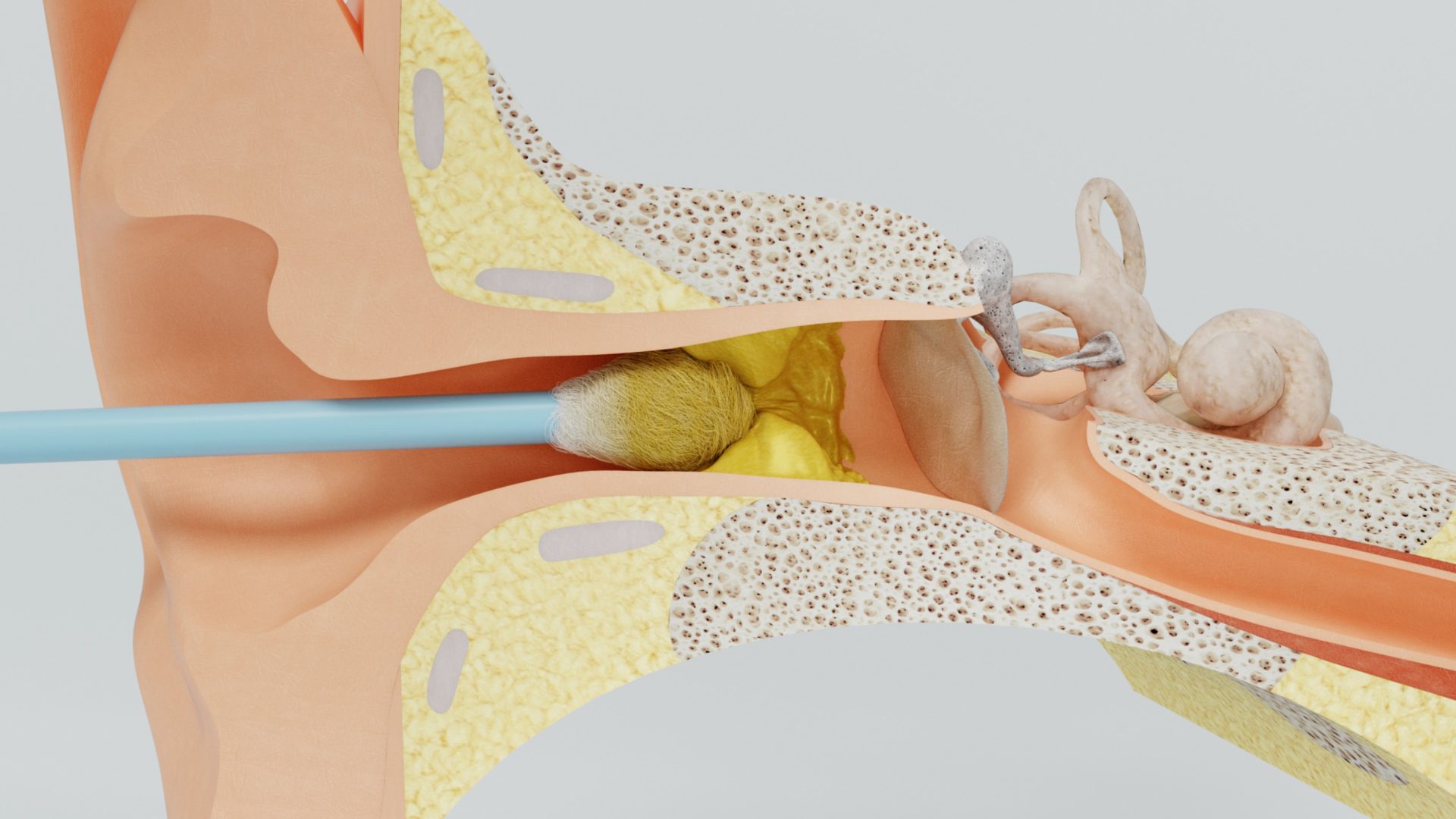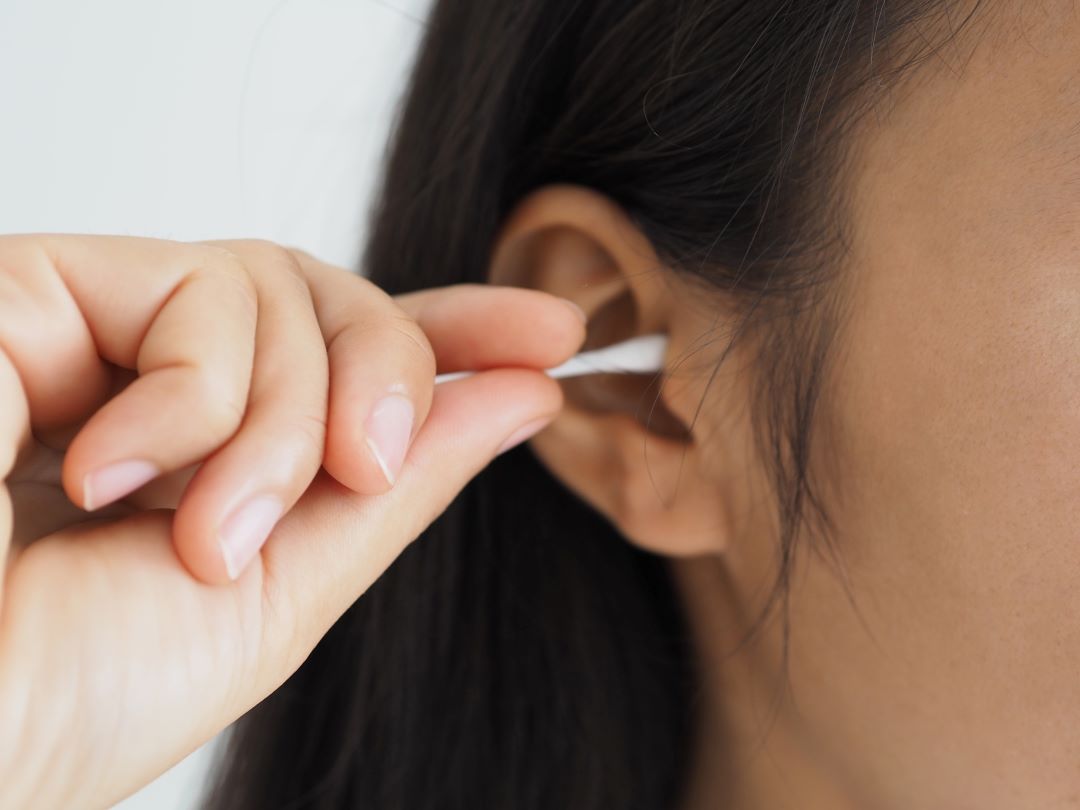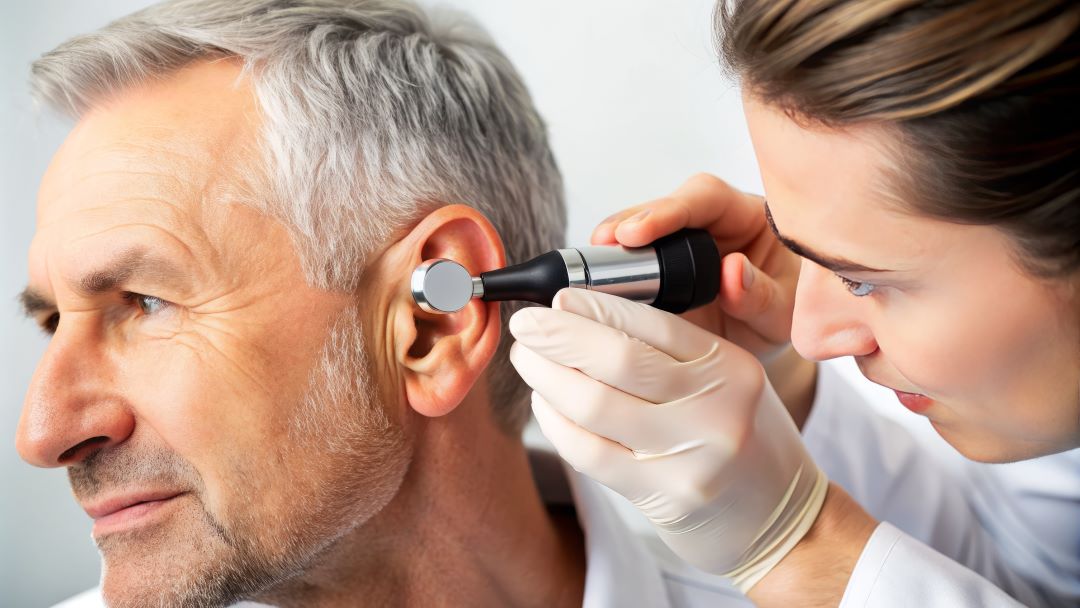Untreated earwax build up can lead to a range of worsening symptoms, including hearing loss, earache, and persistent irritation. While earwax blockage is generally not dangerous and symptoms often resolve with proper treatment, it’s important to recognise the signs early and understand the treatment options available to alleviate any hearing-related issues.
In this article, we will delve into the signs and symptoms of earwax blockages, explore the underlying causes, and outline the most effective treatment options.
Why do we have earwax?
Earwax is a waxy and yellowish substance that lines the inside of the ear canal, and is produced by sebaceous glands within the ear. This production serves a vital protective function, safeguarding the delicate skin of the ear canal from dust, dirt, and potential infections. The ear canal, extending from the outer ear to the eardrum, relies on this wax to form a barrier against moisture, injury, and the intrusion of foreign objects.
This process is a natural part of the ear’s self-cleaning mechanism. Over time, the earwax is gradually propelled from the deeper regions of the ear canal toward the outer entrance. This movement is facilitated by the slow, continuous growth of skin cells within the canal, as well as the natural motions of the jaw.
What is earwax blockage?
While earwax is crucial for preserving ear health, an excessive accumulation, medically termed cerumen impaction, can lead to a variety of issues. This condition can manifest as ear pain, tinnitus (ringing in the ears), and itchiness, and it may also prevent an adequate assessment of the ear canal or tympanic membrane.
In some cases, individuals may produce an overabundance of earwax, resulting in blockages that, though often asymptomatic, have the potential to cause significant discomfort and further complications if left unaddressed.
Who is most likely to develop an earwax blockage?

Earwax blockage can happen to anyone, at any age. Those most likely to experience ear wax build up include:
- Individuals who frequently use hearing aids, earplugs, or earbuds. Regular use of hearing aids that sit inside the ear can trap earwax, pushing it deeper into the ear canal. This can lead to an increased risk of cerumen impaction and related complications.
- People with an excessive amount of ear hair. A higher density of hair within the ear canal can impede the natural movement of earwax towards the ear opening, leading to a greater likelihood of wax build-up and blockage.
- Those with skin conditions such as eczema. Individuals with dermatological conditions like eczema may experience dry, flaky skin within the ear canal, which can mix with earwax, aggravating the ear. This can also make the ear canal more susceptible to irritation and infections.
- Individuals who frequently use cotton swabs to clean their ears. Repeated use of cotton swabs or similar objects to clean the ear can inadvertently push earwax deeper into the canal, compacting it. This can cause microtrauma to the ear canal lining.
- People aged 55 years and older. As people age, earwax tends to become drier, harder, and less mobile, making it more difficult for the wax to naturally exit the ear canal. This increased likelihood of build-up can lead to a higher incidence of cerumen impaction among older adults.
- Individuals with misshapen or narrow ear canals. Anatomical variations such as misshapen or unusually narrow ear canals can hinder the natural expulsion of earwax, causing it to accumulate more easily and increasing the risk of blockage and associated symptoms.
Symptoms of earwax blockage
Recognising the symptoms of earwax blockage is essential for timely intervention and maintaining ear health. Read below for the most common symptoms:
- Hearing loss
- Earache
- Sense of ear fullness
- Itching in the ear
- Dizziness
- Ringing in the ears
- Cough
The symptoms of earwax blockages may seem like other health conditions at the time, and that is why it is always best to see your audiologist for more information.
Causes of earwax blockages

Earwax blockages happen when your ear makes earwax faster than your body can remove it. This can happen with many health conditions such as:
- Infectious diseases, such as swimmer’s ear (otitis externa): Individuals suffering from infections like swimmer’s ear, which is an inflammation of the ear canal often caused by bacterial or fungal growth, are more susceptible to earwax build-up. The infection can cause swelling and narrowing of the ear canal, which can trap earwax and worsen the blockage.
- Skin diseases, such as eczema: People with skin conditions like eczema, which causes the skin to become dry, itchy, and inflamed, may experience similar symptoms in the ear canal.
- Autoimmune diseases, such as lupus: Those with autoimmune diseases like lupus, where the immune system attacks healthy tissues, may have a heightened risk of developing earwax blockages. These conditions can cause chronic inflammation and changes in skin texture, including within the ear canal, which can lead to excess wax production and build-up.
- Narrowed ear canal, whether congenital, due to chronic inflammation, or resulting from injury: Individuals with naturally narrow ear canals, or those who have developed narrowing due to repeated inflammation or physical injury, are more prone to earwax blockage.
- Routine use of cotton swabs to clean the ears: Individuals who regularly use cotton swabs or similar objects to clean their ears often unintentionally push earwax deeper into the canal. This compacts the wax against the eardrum or ear canal walls, making blockages more likely and harder to remove.
- Frequent use of hearing aids or earplugs: People who consistently use hearing aids, earplugs, or similar devices that fit inside the ear canal may prevent earwax from naturally migrating out of the ear. These devices can also introduce debris or bacteria into the ear canal, further contributing to wax build-up and the risk of blockage.
Treatment: Microsuction removal
Microsuction is widely regarded as the gold standard for earwax removal due to its precision and effectiveness. This technique involves the use of a specialised instrument, which is carefully inserted into the ear canal to gently suction out accumulated earwax, without the need for water or force.
One of the key advantages of microsuction is its suitability for individuals with a perforated eardrum, a condition where other methods, such as irrigation, may be a risk. This makes microsuction an ideal option for patients who require a thorough yet minimally invasive approach to earwax removal.
What not to do when you have an earwax blockage
Attempting to remove earwax at home or seeking help from anyone that isn’t qualified to perform a procedure can be dangerous and lead to a series of complications.

Here are some of the things you should avoid doing to prevent potential harm to your ears:
- Avoid using cotton buds. While cotton buds can safely clean the outer ear, inserting them into the ear canal can push wax deeper, potentially damaging the eardrum.
- Avoid excessive cleaning. Your ears are naturally designed to clean themselves, and overcleaning can interfere with this process. This can result in dryness, irritation, and even increased wax production.
By following proper care guidelines and seeking professional treatment when necessary, you can maintain healthy ears and avoid the discomfort associated with earwax blockages.
If you feel like you’re experiencing anything unusual or uncomfortable, get in touch with us to book an appointment.

